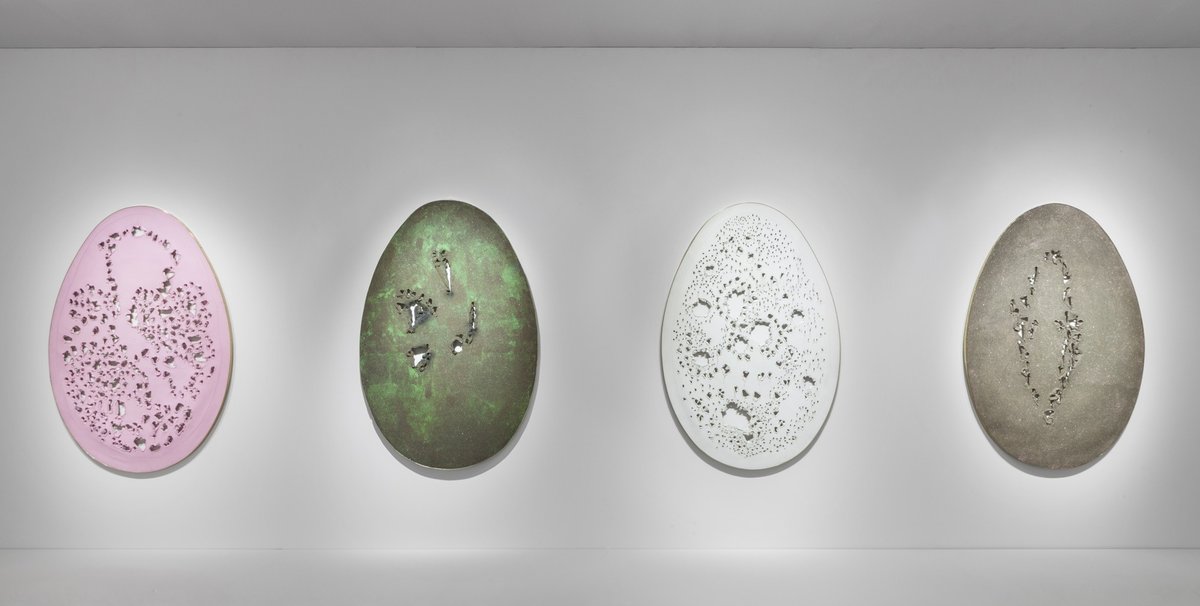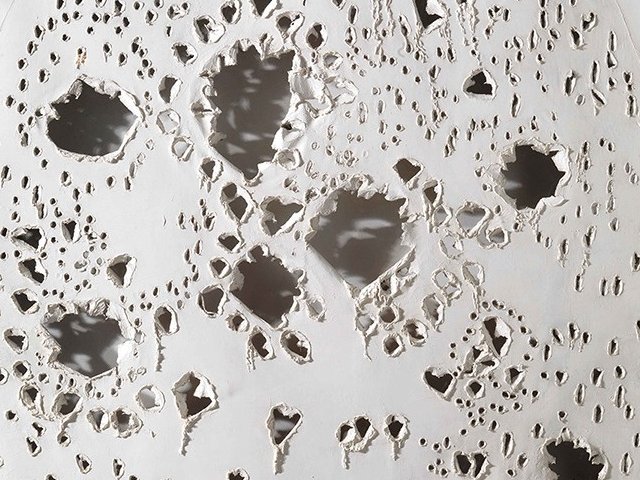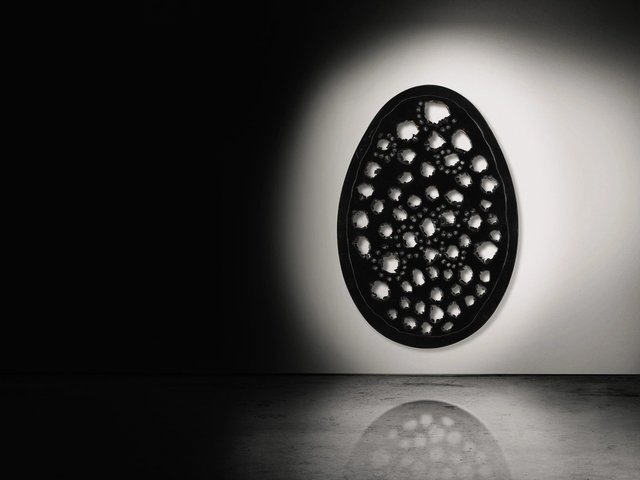Tornabuoni Art gallery has pulled off an art historical coup with its presentation at Art Basel (until 18 June) of four rare and fragile works from Lucio Fontana’s Fine di Dio series (1963-64). The last exhibition devoted to these works, comprising 38 pieces in total, was held in June 1963 at the Galleria dell’Ariete in Milan, when five of the large, oval-shaped perforated works painted in different monochrome hues were displayed.
A selection of preparatory studies, photographs, letters and documents linked to the works are also on show at the Tornabuoni Art stand as part of the catalogue research project led by the Italian art historian Enrico Crispolti and Luca Massimo Barbero, the director of the art institute at the Fondazione Cini in Venice.
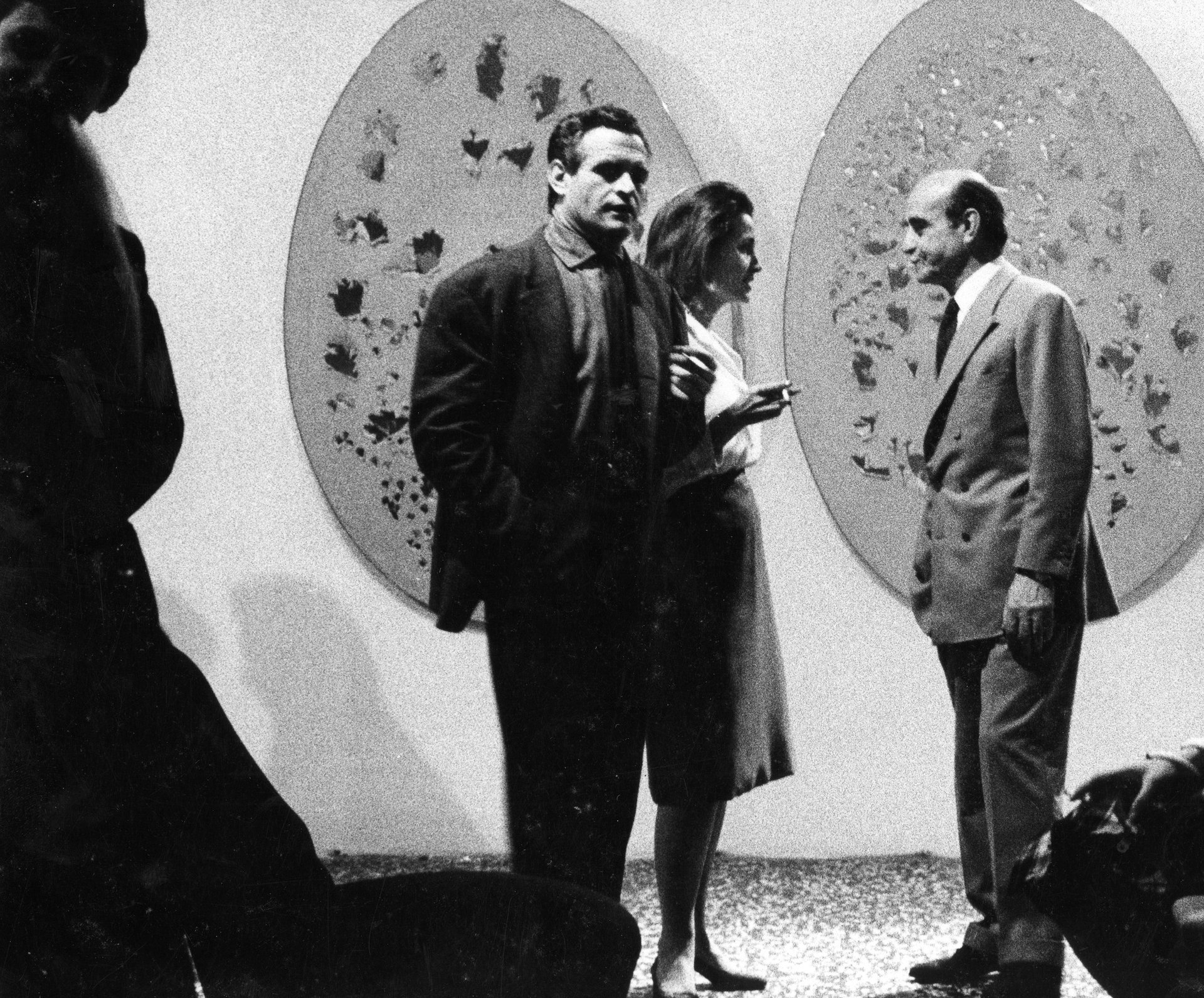
Before he made the pieces, Fontana had chosen the title Fine di Dio. “But for 18 months hereafter, he published them and exhibited them under various titles: Le Ova [The Eggs], Concetti astrali [Astral concepts], Concetti ovali [Oval concepts]), without ever calling them Fine di Dio. That title remained private, and confined to private correspondence with few acquaintances,” says Michele Casamonti, the gallery's director.
Fontana kept the title under wraps until 1964. “As Crispolti explains, it was Gillo Dorfles, curator of the 1963 exhibition in Beatrice Monti’s Galleria dell’Ariete in Milan, who dissuaded Fontana from keeping this title. Dorfles thought the title Fine di Dio too ‘magniloquent’. In other words, that title was too dangerous for Catholic Italian culture in early 1960s Italy,” he says.
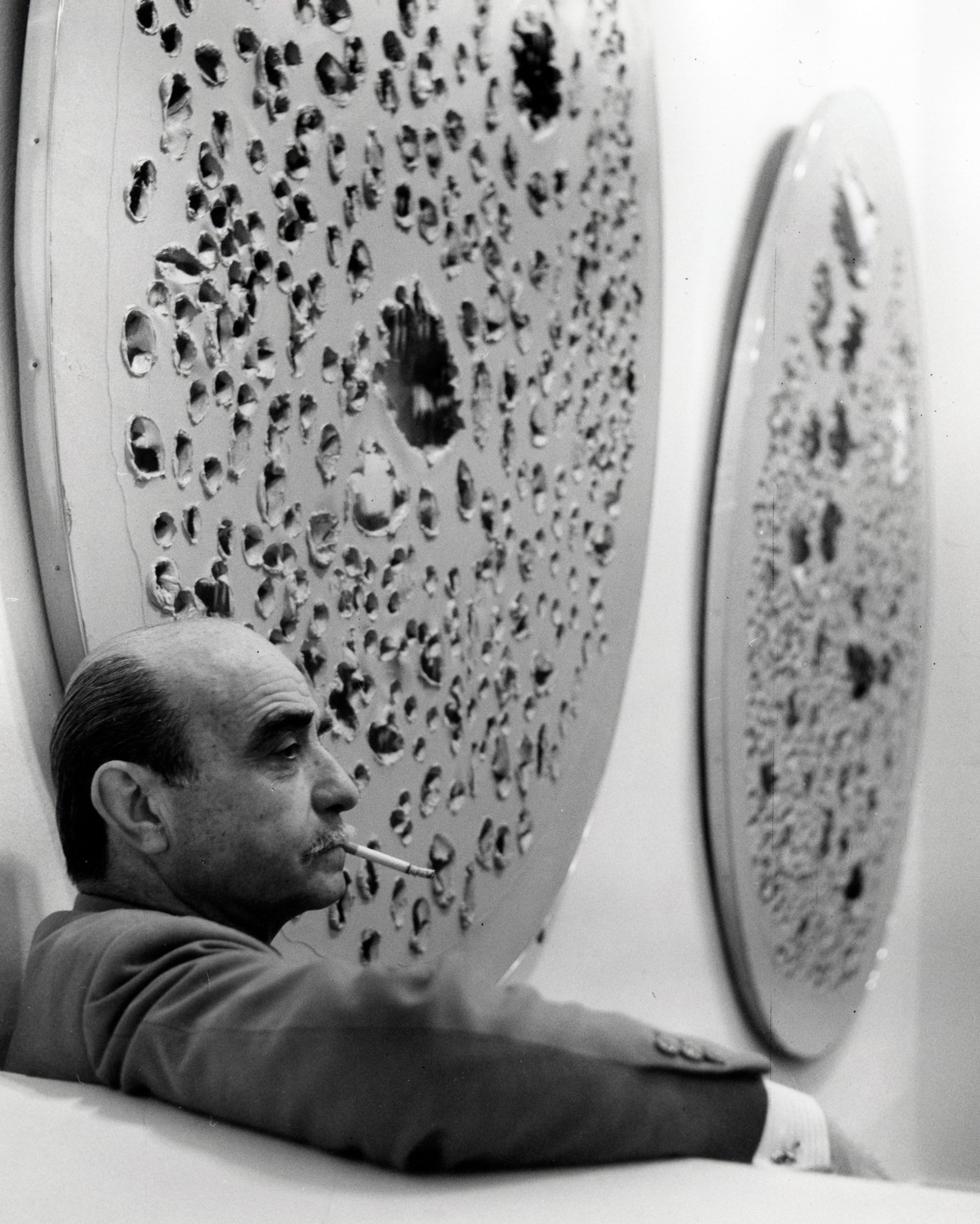
Meanwhile, in a letter shown on the Tornabuoni Art stand, Fontana rules out showing the oval-shaped works at Galerie Iris Clert in Paris late 1963 for fear that the works would be mistaken for “Christmas eggs”. The Paris show was subsequently pushed back to February 1964. A selection of photographs taken at the exhibition opening, which were uncovered at the Getty Research Institute in Los Angeles, are included in the catalogue.
Why present such a research-focused stand at the fair? “[The] market and research are not opposites. On the contrary, the examination and historic study of the artists we love is central to the gallery’s activity, and in reality lifts our market operations,” says Casamonti. Works from the Fine di Dio series are valued, "depending on their quality", between €20m and €40m, he says. Tornabuoni Art operates galleries in Florence, Milan, Paris, London and Crans-Montana.


